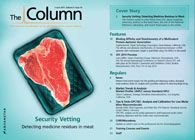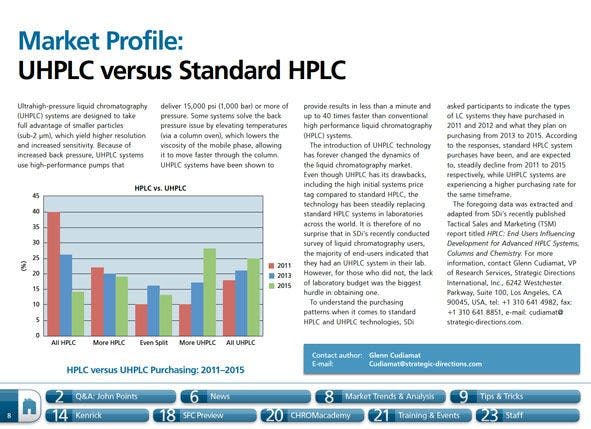Speedy GC
A group of collaborating researchers in Brazil has increased the instrumental throughput of a gas chromatography-flame ionization detection (GC-FID) method by a factor of 2.6 without instrumental modification.1
A group of collaborating researchers in Brazil has increased the instrumentalthroughput of a gas chromatography–flame ionization detection (GC–FID)method by a factor of 2.6 without instrumental modification.1 The studypublished in the Journal of Chromatography A presents a new method forthe determination of friedelan-3-ol and friedelin in the leaves of Maytenusilicifolia. Maytenus ilicifolia is a Brazilian medicinal plant used in the treatmentof gastritis and gastric ulcers.
There is increasing pressure to reduce the cost of sample analysis throughoutthe chromatography industry. Recent developments allowing the refinementof furnace temperature controls, reduction in column lengths, and improveddata management systems have led to reduced analysis times but there is stillroom for improvement.
The researchers used a multiple injection in a single experimental run(MISER) approach to increase the throughput of the GC–FID method. This isnot a new idea according to the authors, and analysis has previously beenrestricted to drug analysis. Pharmaceutical formulations are relatively simplesamples in that they produce a small number of peaks, and it has been unclearuntil now whether this method is transferrable to complex mixtures.MISER with GC–FID was performed to analyse the levels of two triterpenes,friedelan-3-ol and friedelin, in the leaves of Maytenus ilicifolia. When using thismethod, the authors reported an increase in instrumental throughput whencompared to a single injection method. Single injection analysis allowed theanalysis of 5 samples per hour, whereas the proposed method allowed analysisof 13 samples per hour.
The results are promising for the further improvement of instrumentalthroughput. The authors report that the method can be used withany conventional equipment without modification, but that it could beimplemented with more selective detection techniques to further improvethroughput.
Reference
1. J.P. Vustuba et al, J. Chromatogr. A. 1274, 159–164 (2013).
This story originally appeared in The Column. Click here to view that issue.

Regulatory Deadlines and Supply Chain Challenges Take Center Stage in Nitrosamine Discussion
April 10th 2025During an LCGC International peer exchange, Aloka Srinivasan, Mayank Bhanti, and Amber Burch discussed the regulatory deadlines and supply chain challenges that come with nitrosamine analysis.












